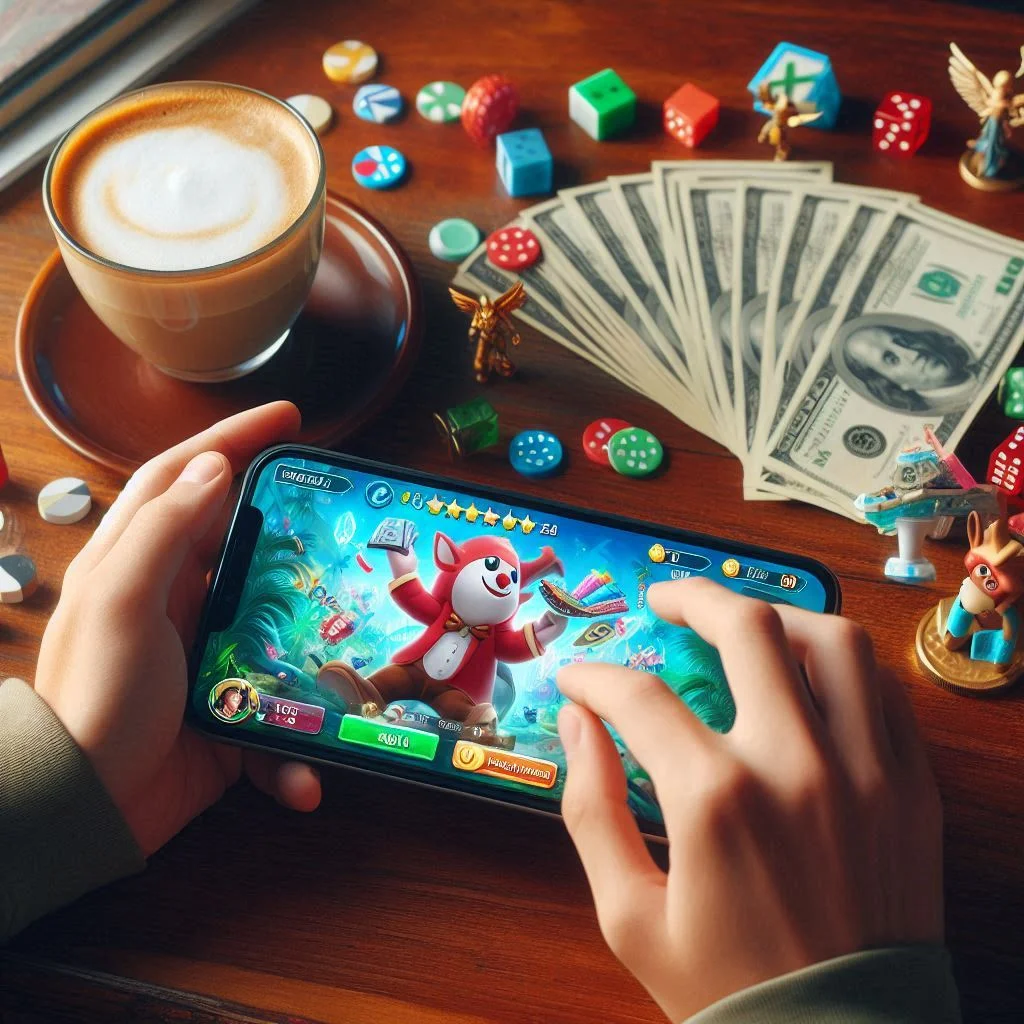What I Bought: Loot Boxes, Skins, and Speed Boosts
During my time spent immersed in the mobile game, I found myself investing a total of $500 into various in-game purchases, primarily loot boxes, cosmetic skins, and speed boosts. Each of these items was intended to enhance my gameplay experience, but the cost and perceived value ultimately left me feeling disappointed.
Firstly, loot boxes were among the most exciting purchases I made. Priced at approximately $3 to $10 each, these virtual boxes promised random rewards, including character enhancements and exclusive items. The allure of potentially acquiring rare gear motivated me to buy several boxes. However, despite my financial investment, the actual rewards mostly consisted of duplicate items or low-value gear, diminishing my enthusiasm and leaving me questioning the actual worth of these loot boxes.
Next, I invested in cosmetic skins, which were available at various price points ranging from $5 to $25. While these skins allowed for visual customization of my characters, they provided no tangible benefits to gameplay. Initially, I believed that owning these attractive skins would enhance my overall experience and make me stand out among other players. Unfortunately, the aesthetic appeal did not translate into any meaningful competitive advantage, leading to a sense of frustration as I watched my gameplay effectiveness remain stagnant.
Finally, I purchased speed boosts, typically costing around $2 to $7 each. These boosts were marketed as a way to expedite progression and enhance gameplay urgency. However, despite the initial thrill of utilizing these power-ups, their effects seemed marginal. The time saved did not correlate with any significant improvement in my gaming results, particularly when competing against younger players who demonstrated exceptional skills.
Still Getting Clapped in PvP
Engaging in Player versus Player (PvP) modes within mobile games often provides an exhilarating experience, yet it can also unveil unexpected challenges, particularly when it comes to skill disparities among players. Despite having invested a significant amount in the game—$500 to be precise—I find myself frequently losing matches against players who are considerably younger or appear to have spent little to nothing on in-game purchases. This situation evokes a deep sense of frustration, reshaping the way I view the relationship between financial investment and actual gameplay performance.
One of the most striking observations in these PvP encounters is that spending money does not always translate into comprehensive gameplay skills. Financial expenditure on game enhancements, characters, or cosmetics can create an illusion of superiority, yet this investment often lacks a corresponding increase in strategic understanding or reflexes. It seems that many younger players, often with quicker reactions and an inherent adaptability to changing game dynamics, are able to outperform me, regardless of the advantages my financial commitment may afford.
The emotional impact of these defeats is considerable. Losing to players who are significantly younger can induce feelings of inadequacy and self-doubt, raising questions about whether the money spent was justified or meaningful within the context of performance. It highlights a disparity that exists within many free-to-play models, where monetary investment does not guarantee victory on the battlefield. Such realizations lead to a sobering thought: while I might have the resources to enhance my game, it is ultimately the player’s skills, honed through practice and dedication, that determine their success in PvP scenarios.
Why Microtransactions Are Addictive
The phenomenon of microtransactions in mobile games has garnered significant attention, particularly due to their addictive nature. One primary catalyst for this addiction is the psychological concept of the fear of missing out (FOMO). Players often confront limited-time offers or exclusive items that promise advantages in gameplay. This sense of urgency compels individuals to spend money impulsively, fearing that if they do not act quickly, they may lose out on valuable opportunities. FOMO taps into the innate desire for social validation and success, as players wish to keep pace with peers or demonstrate their commitment to the game.
Another compelling factor is the thrill of chance associated with loot boxes. When players purchase these virtual containers, they often experience a rush of excitement as they anticipate the rewards inside. This uncertainty—similar to gambling—creates a loop of behavior that reinforces spending. Each time a player opens a loot box, they engage in a form of risk-taking behavior that can lead to feelings of satisfaction or disappointment. Game developers exploit this psychological trigger by incorporating random rewards, increasing the likelihood of repeated purchases as players chase after elusive items or character upgrades.
Moreover, the design elements within mobile games strategically encourage spending. The monetization models employed often emphasize short-term gratification over long-term value. For instance, players can be offered temporary boosts or enhancements that seem appealing but provide little in terms of real gameplay worth. This approach fosters a cycle where players continuously invest in microtransactions to maintain progress or competitiveness. As a result, the intentional incorporation of FOMO and chance-based mechanics creates an engaging interface that encourages ongoing financial commitment, often regardless of tangible benefits received from those expenditures.
Casino Logic in Game Design
In recent years, the design of mobile games has increasingly mirrored the mechanics found in traditional gambling establishments. This convergence can be attributed to the implementation of structures that encourage players to invest money in a manner akin to how a gambler might approach a slot machine. Both types of games exploit psychological principles to enhance player engagement and encourage ongoing spending.
One of the foundational elements that connects mobile games with casino operations is the element of chance. Just as slot machines utilize random number generators to create unpredictable outcomes, many mobile games incorporate random reward systems to maintain player interest. These rewards may come in the form of loot boxes, in-game currency, or special items, enticing players to invest further in the hope of acquiring something valuable. The excitement of a potential win feeds into a player’s desire to continue playing, often resulting in increased expenditures.
Furthermore, the strategic placement of rewards in mobile games is reminiscent of the tactics employed in casinos to maximize player spending. In both environments, immediate gratification is a key factor. For instance, mobile games frequently employ a tiered reward system where players receive immediate, small-scale rewards, which are then followed by the chance to earn larger, more elusive prizes. This structure mimics the rewards system of casino games, where frequent small wins lead players to believe they have a good chance of hitting a jackpot eventually, driving them to continue investing their time and money.
The influence of casino logic within mobile gaming raises significant questions regarding the ethics of game design. Many players may not fully understand how these mechanics exploit behavioral psychology, leading to unintentional addiction and significant financial expenditures. This reality illustrates the importance of awareness in the gaming community, navigating the fine line between entertainment and excessive spending.
Gacha Mechanics Explained
Gacha mechanics are a prevalent feature in many free-to-play mobile games, enticing players through a blend of chance and reward. Originating from the Japanese term “gachapon,” which refers to capsule toy vending machines, gacha systems revolve around the concept of randomized rewards. Players spend in-game currency or real money to acquire a random assortment of characters, items, or upgrades. This uncertainty generates excitement, making players eager to see what they will receive with each pull.
At the heart of gacha mechanics is the tiered system of rarity. Items or characters are categorized into various levels of rarity, often denoted by different visual cues, such as color or tier names. Common items are easy to obtain, while rarer ones are significantly harder to find, fostering a sense of accomplishment when players finally acquire them. This tiered structure not only heightens excitement but also cultivates the psychological desire to chase after the elusive high-tier rewards, encouraging players to spend substantial amounts of money in hopes of achieving their desired items.
The interplay of randomness and rarity triggers a powerful emotional response in players. When a player makes a purchase and is rewarded with a character or item they desire, it creates a gratifying experience, reinforcing their willingness to invest more. Conversely, receiving multiple low-tier rewards can lead to disappointment, prompting players to continue spending in hope of improving their odds on subsequent attempts. This cycle of thrill and letdown forms the backbone of gacha mechanics, driving player engagement and, ultimately, expenditure.
In summary, gacha mechanics leverage human psychology effectively, transforming chance encounters into a compelling gameplay experience. This method fosters a strong incentive for players to invest, as the allure of rare rewards and the excitement of unpredictability keep them returning to the game. Understanding these mechanics is crucial for players who wish to navigate the landscape of free-to-play mobile games responsibly.
No Skill = No Win
In the realm of competitive gaming, the notion that monetary investment can translate into superior skill is a fallacy often dispelled through practical experience. Despite spending $500 on a mobile game rife with microtransactions, the realization struck that these financial inputs did not equate to the necessary talent or ability to outperform younger, more agile competitors. This phenomenon raises critical questions about the fundamentals of gaming: Can one truly buy success, or is it rooted deeply in practice and skill development?
The harsh reality is that, while microtransactions can provide players with cosmetic enhancements or minor advantages, they cannot substitute for the essential skill set required in gaming. Engaging in a game necessitates much more than acquiring virtual items; it calls for practice, strategy, and a nuanced understanding of the game’s mechanics. Countless defeats, many at the hands of players less encumbered by monetary privilege but rich in experience, have illuminated the stark difference between financial investment and genuine skill.
Each encounter serves as a valuable lesson. Continued losses can foster a deeper understanding of the game’s intricacies and highlight weaknesses in one’s gameplay. This continuous cycle of trial and error ultimately enhances proficiency far more than any purchased upgrade. Moreover, as younger players often possess faster reflexes and an innate ability to adapt to fast-paced environments, they may surge ahead regardless of financial expenditure. Their skill, shaped by hours of practice, cannot be matched by spending alone.
Ultimately, success in gaming requires commitment to mastering one’s craft. As the competition grows fiercer, it becomes increasingly evident that true victory is grounded not in how much money one is willing to invest, but in the time and effort devoted to honing one’s skills. Thus, it is clear that in the pursuit of gaming excellence, skill development remains paramount over financial indulgence.
Money Can’t Buy Talent
In the realm of mobile gaming, a common assumption is that the more money one invests in a game, the better their chances of success. However, this notion is often challenged by the reality that monetary investment does not guarantee mastery or victory. Many players, including myself, have spent substantial amounts on in-game purchases, yet found themselves unable to match the skills of younger competitors or seasoned players. This paradox illustrates that talent and strategic thinking hold greater value in gaming than mere financial input.
Take the popular game “Clash of Clans,” for instance. Players can spend hundreds of dollars on resources and upgrades. Yet, without a keen understanding of strategy and mechanics, even the highest levels of expenditure may not translate into triumph. I have witnessed various players who have invested heavily find themselves sidelined by those who, with minimal financial commitment, employ superior tactics. It becomes apparent that success depends largely on one’s ability to adapt, learn, and respond effectively in competitive scenarios.
Moreover, games like “Fortnite” highlight the importance of skill over spending. The competitive edge often belongs to those who practice consistently and refine their techniques, rather than those who have merely purchased the latest skins or gear. A tenacity for learning and the persistence to practice come together to create a formidable skill set that money simply cannot replicate. This underscores the idea that while financial resources can enhance gaming experiences, they cannot replace personal growth and dedication.
As I reflect on my own experiences, I realize that the joy of gaming lies not only in victories but also in personal development. Players must understand that true success on the gaming battlefield is achieved through commitment, strategic planning, and continuous improvement. The realization that money cannot buy talent is fundamental for anyone seeking to enhance their skills in gaming and to rise beyond monetary barriers.
How I Finally Won… Barely
After countless attempts, the moment I had spent weeks striving for finally arrived. I managed to secure a hard-fought victory in the mobile game that had dominated my thoughts and finances. Initially, the excitement of utilizing purchased enhancements felt paramount, yet I soon discovered that the essence of success lay much deeper. It was not merely about wielding the latest upgrades or having an edge through financial investment. Rather, it was a culmination of persistence, strategy, and the skills I had meticulously honed over numerous gameplay sessions.
The euphoric sensation I experienced upon winning was visceral; I had finally demonstrated that consistent effort can yield results, even when the competition included notably younger players. Each previous failure had contributed to this win—the lessons learned from missed opportunities and the tactics gleaned from challenging opponents reinforced my gameplay knowledge. I realized that while my financial investment allowed access to superior resources, it was the strategic application of learned skills that ultimately secured my victory against a formidable 12-year-old competitor.
This experience illustrated that achievements in mobile gaming are often deeply intertwined with dedication and adaptability, rather than solely resting on monetary input. The victorious moment became not merely an endpoint, but a pivotal lesson in resilience. The victory, while significant personally, also emphasized the important role that patience and learning play within the gaming community. Enjoyment of the game flourished through this journey, transcending beyond the immediate goal of winning.
In looking back at this experience, it is evident that gaming—whether through strategy, perseverance, or teamwork—can lead to moments of personal triumph that resonate beyond individual matches. My recent success reflects a broader understanding of gameplay, where every loss becomes a stepping stone to future victories, no matter the age of the opponent.

It could cover a range of topics related to health, wellness, beauty, personal growth, and social issues, all from the perspective of striving for beauty, intelligence, youthfulness, and impartiality





